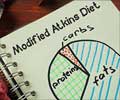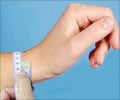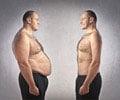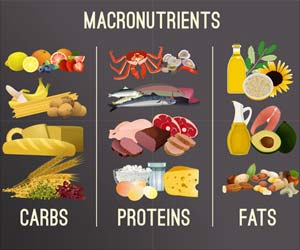Essential Weight Indicators
The basic indicators for judging the weight status are as follows:
BMI (Body Mass Index)
BMI is an indicator of how healthy you are. It’s a health indicator based on weight and height, and it applies to both men and women.
BMI and Weight Status
| BMI | Weight |
| Below 18.5 | Underweight |
| 18.5 - 24.9 | Normal Weight |
| 25 - 29.9 | Overweight |
| Over 30 | Obese |
Recent revisions in the standards, however, state that a BMI over 23 is considered to be overweight for Indians.
Fat Percent
Body fat mass is the percentage of fat the body has. Two people can have the same height, weight and BMI but may have different body fat percentages. It is the real indicator of health and weight status.
Body fat percentage considered normal:
Men – 18% - 25%
Women – 25% - 31%
Body fat percentage considered obese:
Men – greater than 25%
Women - greater than 32%
Waist to Hip Ratio
The ratio of waist to hip circumference is an important predictor for risk of chronic degenerative diseases.
Recommended waist to hip ratio
Men – 0.95 or less
Women – 0.8 or less
A ratio of more than 0.95 for men and 0.8 for women is associated with increased risk of several chronic diseases.
Recommended waist circumference
Men – less than 90cm (36 inches)
Women – less than 80 cm (32 inches)
BMR
BMR (Basal Metabolic Rate) is the minimum energy required to sustain life - for your heart to beat, and for you to breathe, work and even sleep. With a higher BMR (inherited or acquired by muscle build up) you lose more calories even at rest. This means, if you have a good BMR, you’ll have a greater tendency to stay thin.
TDEE
TDEE (Total Daily Energy Expenditure) is the total number of calories that a human body expends in 24 hours. Caloric requirements may vary among otherwise identical individuals due to difference in their inherited metabolic rates. After calculating the BMR, you can calculate the TDEE by multiplying the BMR by the activity multiplier from the chart below.
Approximate energy expenditures for various activities in relationship to BMR in average size individuals is tabulated here:
Energy Expenditure and BMR
| Activity Category | Types of Activities | Activity Factor |
| Sedentary | Little or No Exercise | BMR x 1.2 |
| Lightly Active | Light Exercise / Sports 1-3 days/wk | BMR x 1.375 |
| Moderately Active | Moderate Exercise / Sports 6-7 days/wk | BMR x 1.55 |
| Very Active | Hard Exercise every day or / exercising 2 hrs/day | BMR x 1.72 |
| Extra Active | Hard Exercise 2 or more times per day | BMR x 1.9 |
Your total daily energy expenditure (TDEE) has to be always greater than your total caloric intake over a period of time for weight loss to occur.
Physical activity is essential to maintain desirable body weight. Overweight and obesity are conditions due to a positive energy balance. Overeating and reduced physical activity together lead to obesity. Genetic predisposition however cannot be ruled out as a contributing factor. Therefore prevention and control of this dreadful condition are directly related to dietary management and physical activity.
Energy Expenditure for some physical activities (Kcal/hr)
| Activity | Kcal/Hr |
| Cycling at | |
| 15 (Km/hr) | 360 |
| Running at | |
| 12 (Km/hr) | 750 |
| 10 (Km/hr) | 655 |
| 8 (Km/hr) | 522 |
| 6 (Km/hr) | 353 |
| 4 (Km/hr) | 160 |
| Table Tennis | 245 |
| Dancing | 372 |
| Tennis | 392 |
| Volley Ball | 180 |
| Standing | 132 |
| Sitting | 86 |
From the above chart you can easily gauge that even to lose a petty 200 Kcal you have to work really hard.
Obesity is a state in which there is generalized accumulation of excess fat in the body. This leads to a body weight that is more than 20 percent of the required weight. Obesity invites disability and disease. Usually obesity is due to positive energy balance, that is, the intake of calories is more than the expenditure. It is one of the most common disorders in medical practice and among the most frustrating.
Obesity is a chronic disease that is becoming increasingly prevalent. It poses serious risk for the development of various diseases, like diabetes mellitus, hypertension, heart disease, gall bladder disease and certain forms of cancer.
Therefore, our focus to eat right and be active should always be consciously kept in mind. Calories, desirable weight, and BMR are just a few technical terms which provide information about the body metabolism and functioning. The basis is to understand individually the doable ways and means of staying fit from within in terms of feeling happy and healthy. Keeping the health parameters like the body fat, cholesterol, blood sugar under control is of prime most importance.



































